Genre: Fighting Developer: Treasure Publisher: Sega Enterprises Players: 1-4 Released: 1994
After the arcade smash hit that was Street Fighter II, the video game landscape was shaped significantly by the fighting game genre. In the years following its 1991 debut, arcades and home consoles alike saw dozens of different takes on the fighting game genre to varying degrees of success. In 1994 alone, the Mega Drive would be blessed by refined sequels to arcade classics, including Super Street Fighter II, Mortal Kombat II, and Fatal Fury 2 – all quite excellent games in their own right! On the other hand, the same year also saw a slew of mediocre-at-best releases in the same genre like Brutal: Paws of Fury or Clayfighter, or weapon-grade crud like Rise of the Robots. When yet another fighting game was released exclusive to the Mega Drive in Japan, based on an anime series that was virtually unknown in the U.S. and in Europe, western audiences barely took notice, and those who did quickly dismissed it onto the “one more fighting game” pile.
With the power of hindsight, however, retro gamers worth their salt should immediately notice two things that make this game immediately stand out from your regular old Street Fighter clone. Firstly, the game was developed by Treasure, the graphics powerhouse known for its visually stunning feats on Genesis titles such as Gunstar Heroes and Dynamite Headdy (and Alien Soldier, which was released after this game). And secondly, this is probably the only fighting game of the entire fourth console generation that doesn’t just sport a regular two-player vs. mode, but rather four-player simultaneous gameplay!
The setting takes its cue from the anime and manga series Yu Yu Hakusho. These days, the series is quite well-known, even outside of Japan. For those unfamiliar with the story, the plot centers around Yusuke Urameshi, a somewhat delinquent but well-meaning teenager. After suffering an accident while saving a kid’s life, Yusuke finds himself in the afterlife where the son of the ruler of the underworld revives him and appoints him as some sort of spirit world detective with the task to investigate supernatural occurrences. This brings him into contact with demons, aberrations, and, of course, lots and lots of supernaturally gifted martial artists, with whom Yusuke forms allies and rivalries, all while finding himself time and again locked into martial arts tournaments hosted by various shadowy figures of the afterlife. So, it’s demons vs. priests. vs paranormal detectives/delinquent teenagers fighting in the spiritual plane. That sounds like a definite prime setting for a fighting game to me.
And credit where it’s due. The development team at Treasure really delivered on turning this premise into an excellent experience. Visually, the game just looks fantastic. The eight stages are colorful, versatile, and highly creative in their scenery, well capturing the eeriness of the supernatural element present in the setting. There is a prairie-like level set in perpetual twilight that feels like it’s from another planet, a Buddhist temple courtyard that slowly shifts from day to night as the fight progresses, and most memorably, a stage set in space with a constantly wafting background filled with wreckage from satellites or planes. All these stages have smooth multilayered parallax scrolling backgrounds (as well as the occasional unobtrusive foreground object). Additionally, sometimes a mild fog is wafting through the scenes with some impressive (for the Genesis at least) transparency, warping effects simulate heat, and there’s also some nice sprite scaling implemented. The soundtrack is also fantastic, underscoring the pounding fighting action with a hint of the eeriness that lends itself to such a paranormal-infused setting. While not necessarily one of the best soundtracks the Genesis library has to offer – some tunes are occasionally too shrill for my tastes and there is some unwarranted distortion going on in some tracks – the tunes warrant listening to even outside of the game.
Gameplay-wise, Yu Yu Hakusho: Makyo Toitsusen offers a couple of mechanics that weren’t common practice in the fighting games of its age. First and foremost is the four-player mode, of course. This is accomplished by utilizing two different planes of action, one foreground and one background plane somewhat similar to those found in SNK’s Fatal Fury series. Players can switch between these planes at the tap of a button, which can be excellent for some split-second evasive maneuvers. Players can also dash forward or backward, a feature that also wasn’t seen in many fighting games previously. The 11 characters present in the game, all naturally lifted from the anime and manga, also have a number of special moves at their disposal. Using those, however, depletes the character’s spirit energy, which needs to be recharged if you want to utilize more special attacks. Some attacks can also be charged for an even stronger blast, with the side effect that you’re left vulnerable while doing so. To recharge, you need to hold down the A or B button while standing completely still, making you a sitting target for any enemy attack. All this makes the battles a tad more strategic than in your usual early Street Fighter or Mortal Kombat clone. Next to the story and regular vs. modes, the game also offers a tournament fighting mode and team battle, where it’s two vs. two players.
While the game is visually outstanding, great fun in multiplayer, and offers a great soundtrack, there are a couple of issues that, at least in my eyes, prevent it from receiving a perfect score. The amount of visual effects the developers managed to pull off is truly impressive and really pushes the poor Mega Drive to the brink of its capabilities. Unfortunately, in the visually more demanding stages like the aforementioned area set in space, slowdown rears its head. This is already noticeable, albeit easily bearable, in single- or two-player modes, but fighting on said stage in four-player mode while blasting off several special moves at once really slows the action down to a crawl. Probably from a similar source, there are occasional audio issues, where the aforementioned distortions may cause the sound to crackle or hiss from time to time – a minor problem and easily ignored, but still present. Finally, fans of finely-tuned fighting game mechanics might have an issue with the roster at hand. Some characters feel too similar in gameplay, and a few seem a bit off-balance when compared to the overall roster. They’re not hugely overpowered, mind you, but they have a slight tinge of cheapness to their attacks and the corresponding power drain. Those are all minor niggles, however. Overall, the game is just excellent.
It’s a shame that the game was never brought to Europe or stateside, which is probably explained by the relative obscurity of the license. Yu Yu Hakusho was quite popular in Brazil, however. That might explain why TecToy decided to localize it in 1999 for the local market as Yu Yu Hakusho: Sunset Fighters, marking it as one of the very few games exclusive to both the Japanese and Brazilian markets. The limited print run and resulting obscurity, combined with the generally excellent gameplay, has made this game a highly sought after collector’s item. The Japanese version can easily fetch prizes in excess of $150 in online auctions. If you need to get your hands on a copy, you could try your luck at South American Auction sites like Mercado Livre, where used copies can be found in a more reasonable price range (though you have to be careful not falling victim to some hustler trying to fob a cheap repo off on you).
While fighting game aficionados might prefer the finely tuned gameplay mechanics of Super Street Fighter II and the like, there’s no denying that Yu Yu Hakusho: Makyo Toitsusen is a graphically stunning Genesis exclusive that is tons of fun, especially in multiplayer. The four-way-play is outstanding during the entire 16-bit era and combined with a really good soundtrack and tons of visual effects still make this game an amazing experience when played with a few friends. Do check this one out if you’ve got the opportunity, which will probably be on a flash cart or emulator, since affordable used copies are unfortunately really hard to come by these days.
SCORE: 9 out of 10

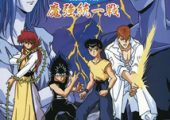
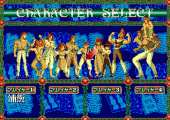
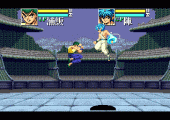
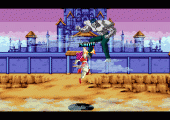
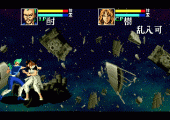
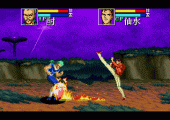
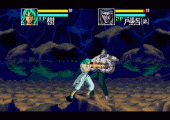
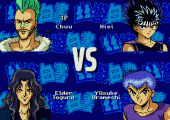
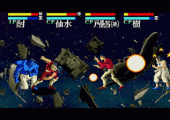
Recent Comments